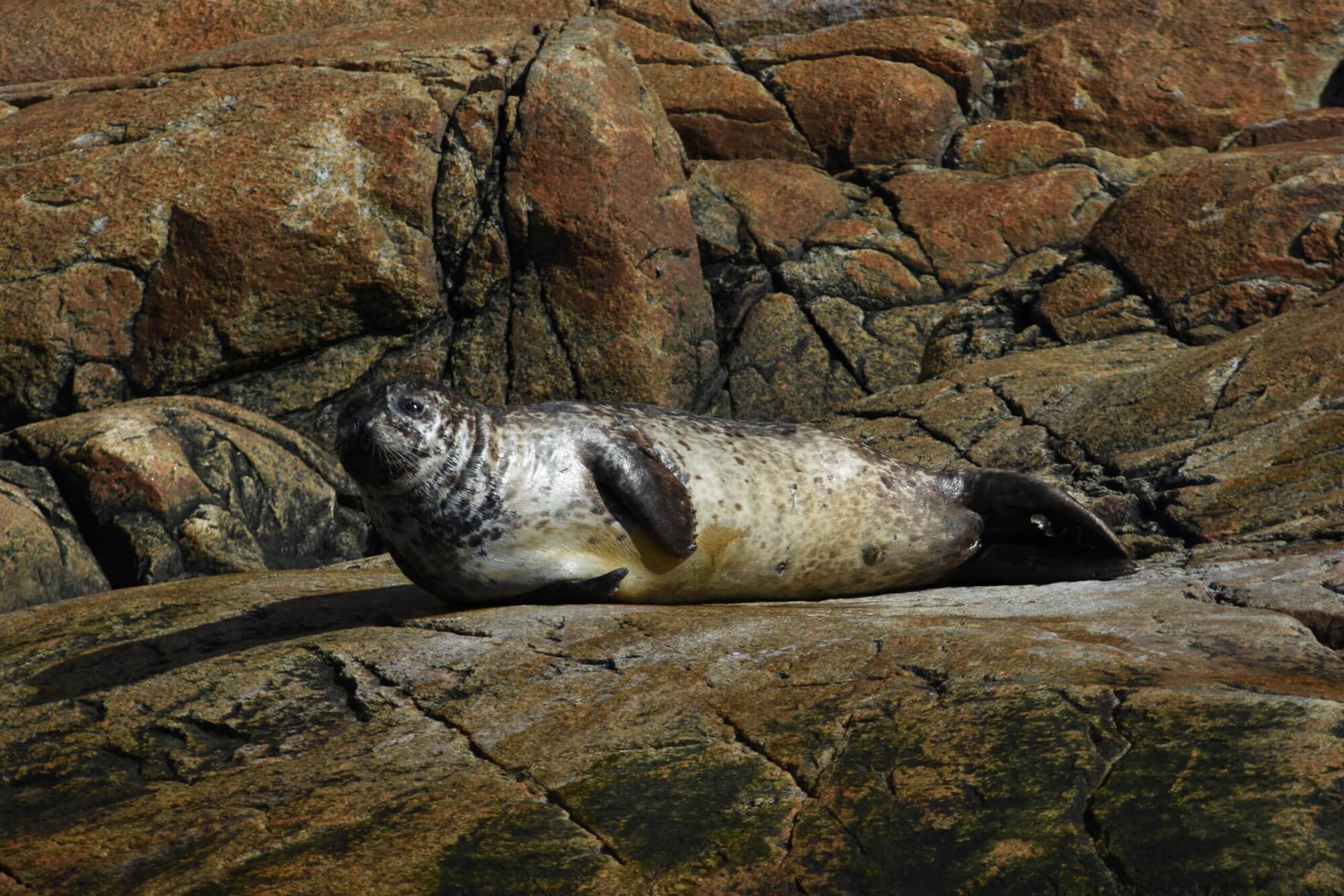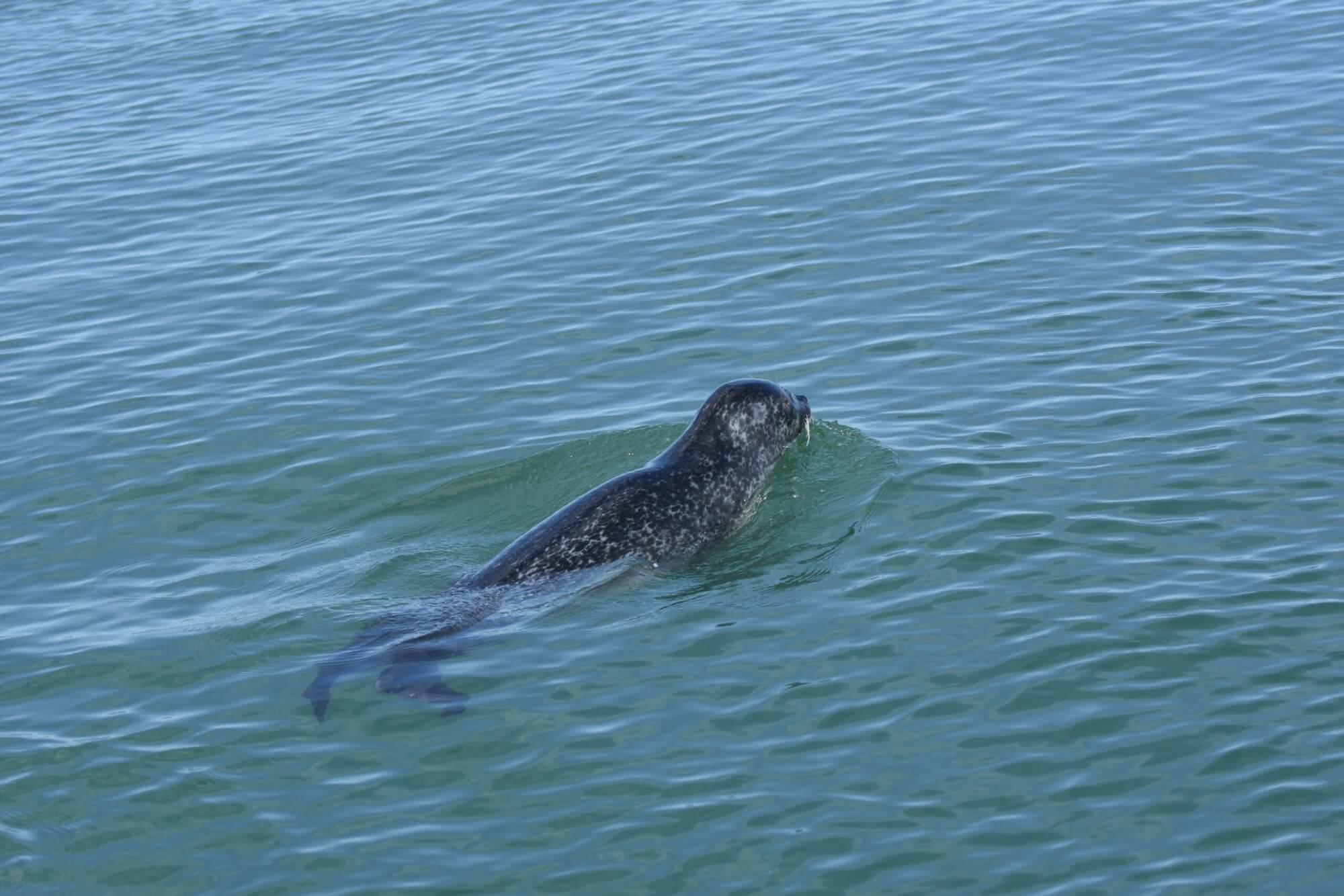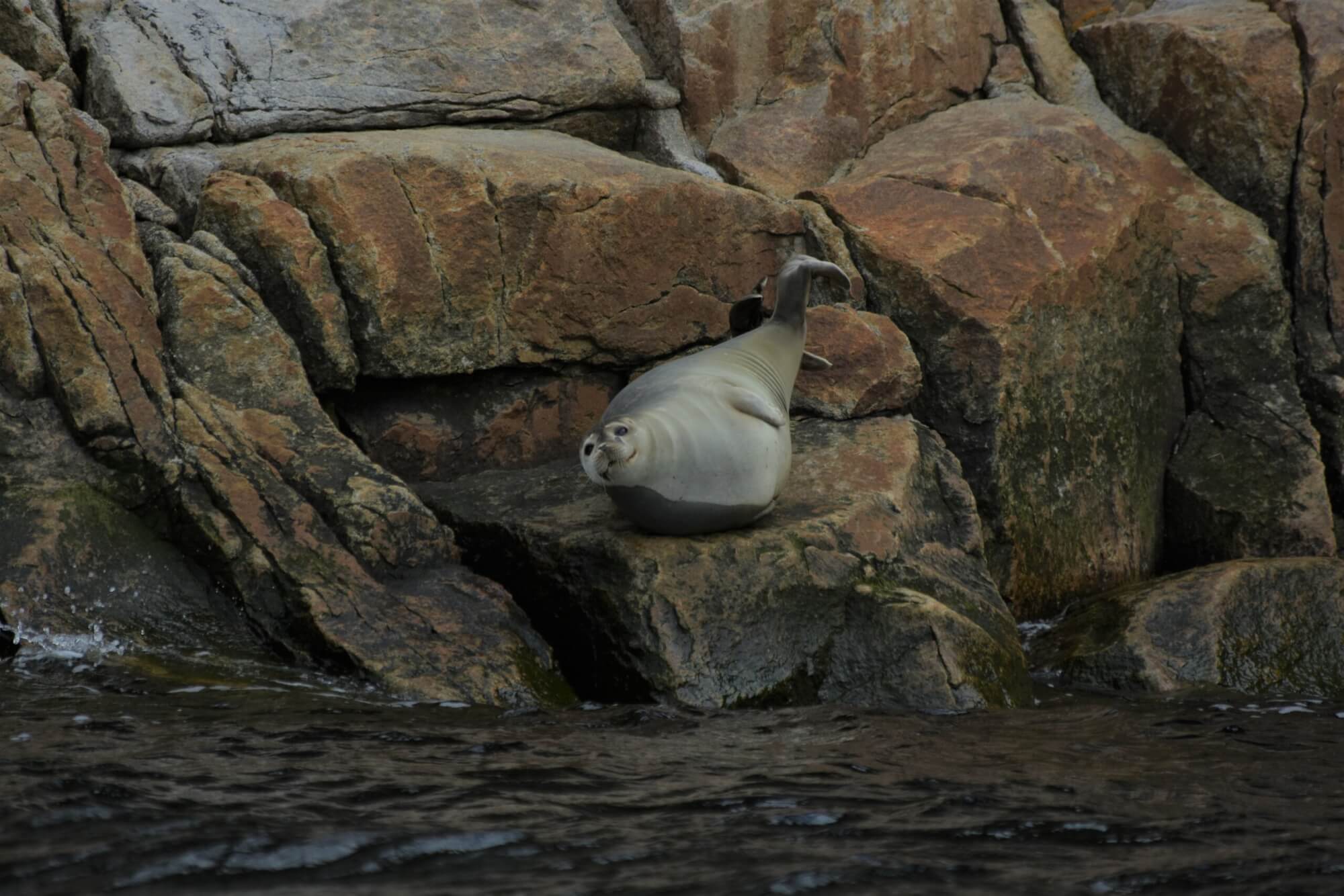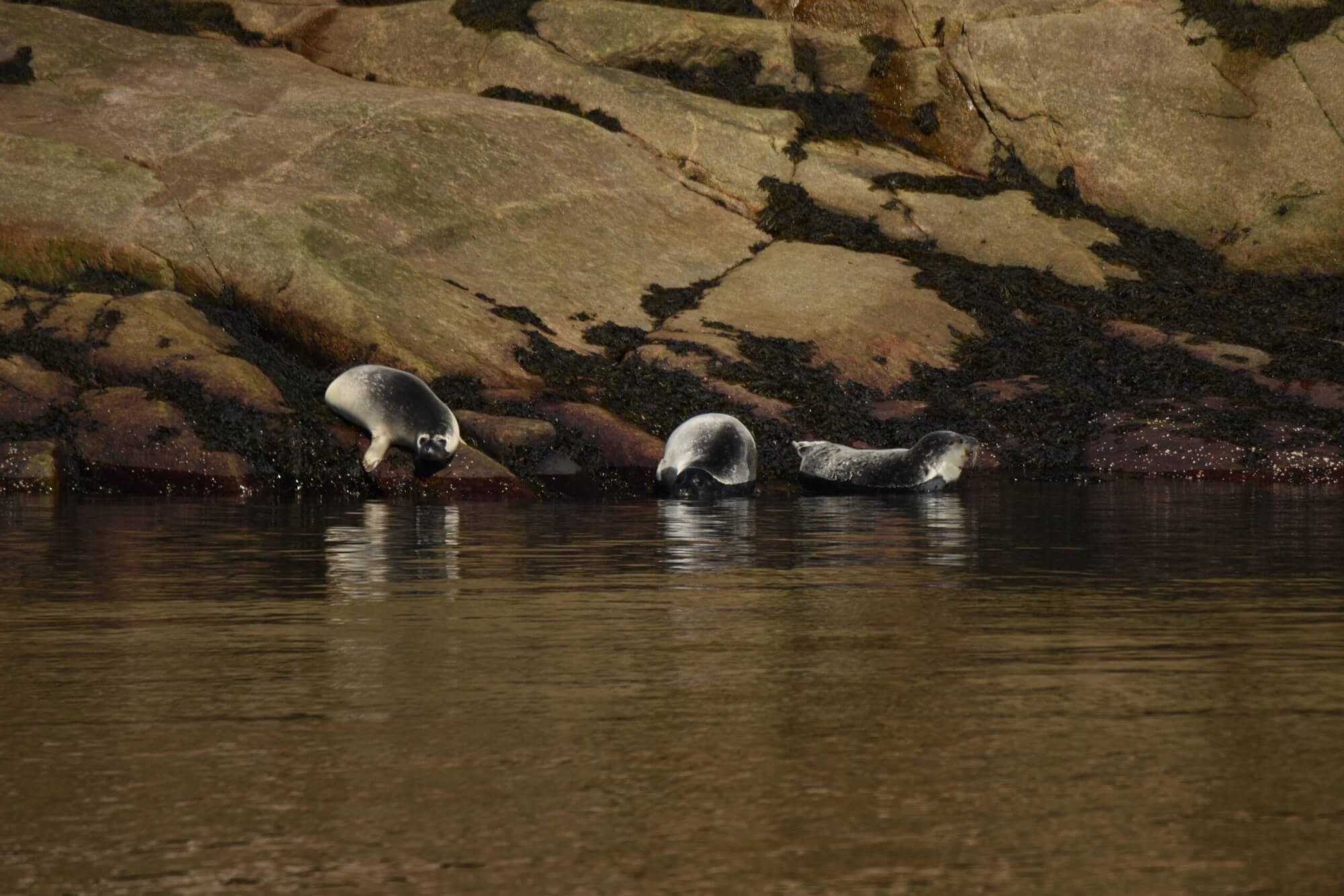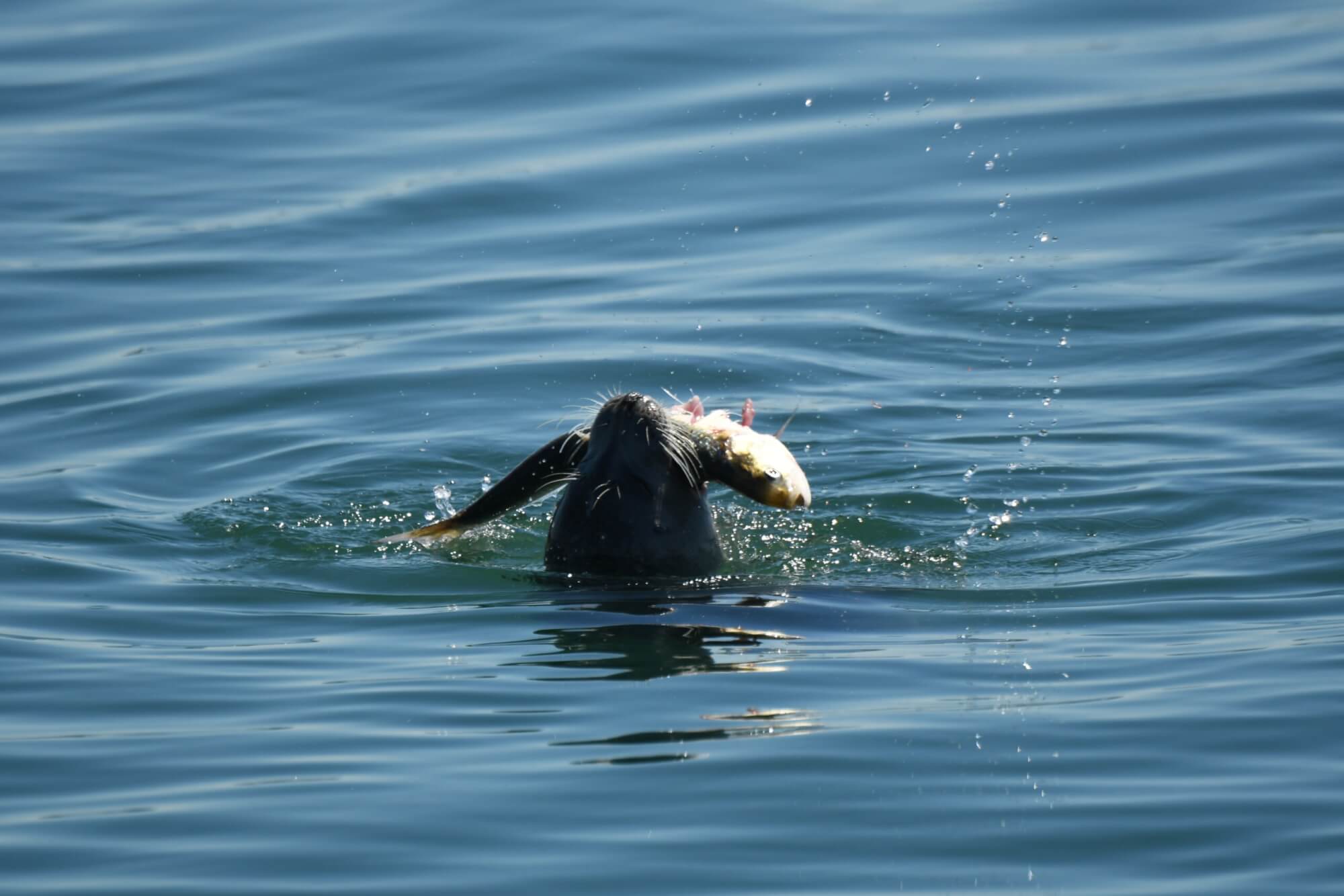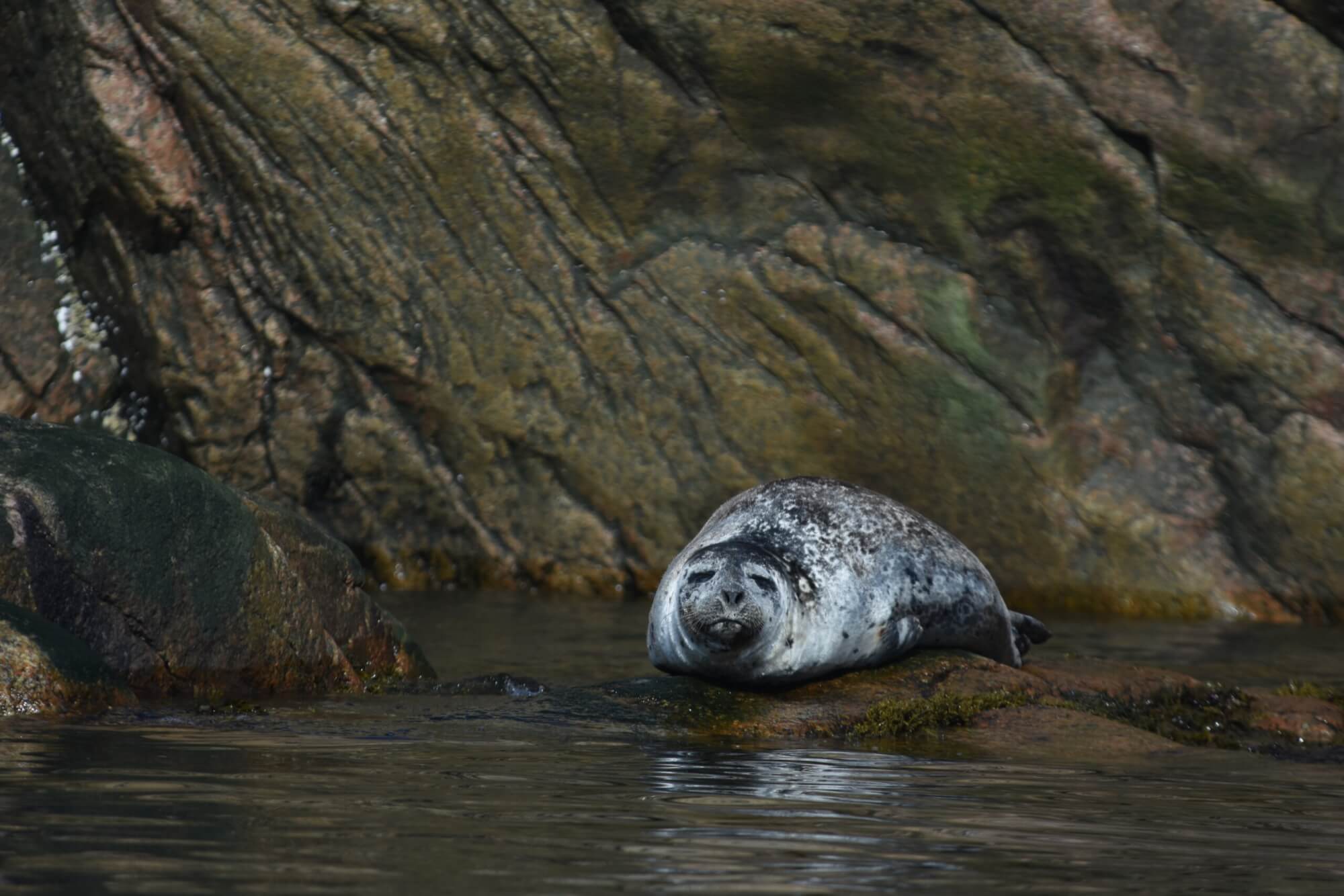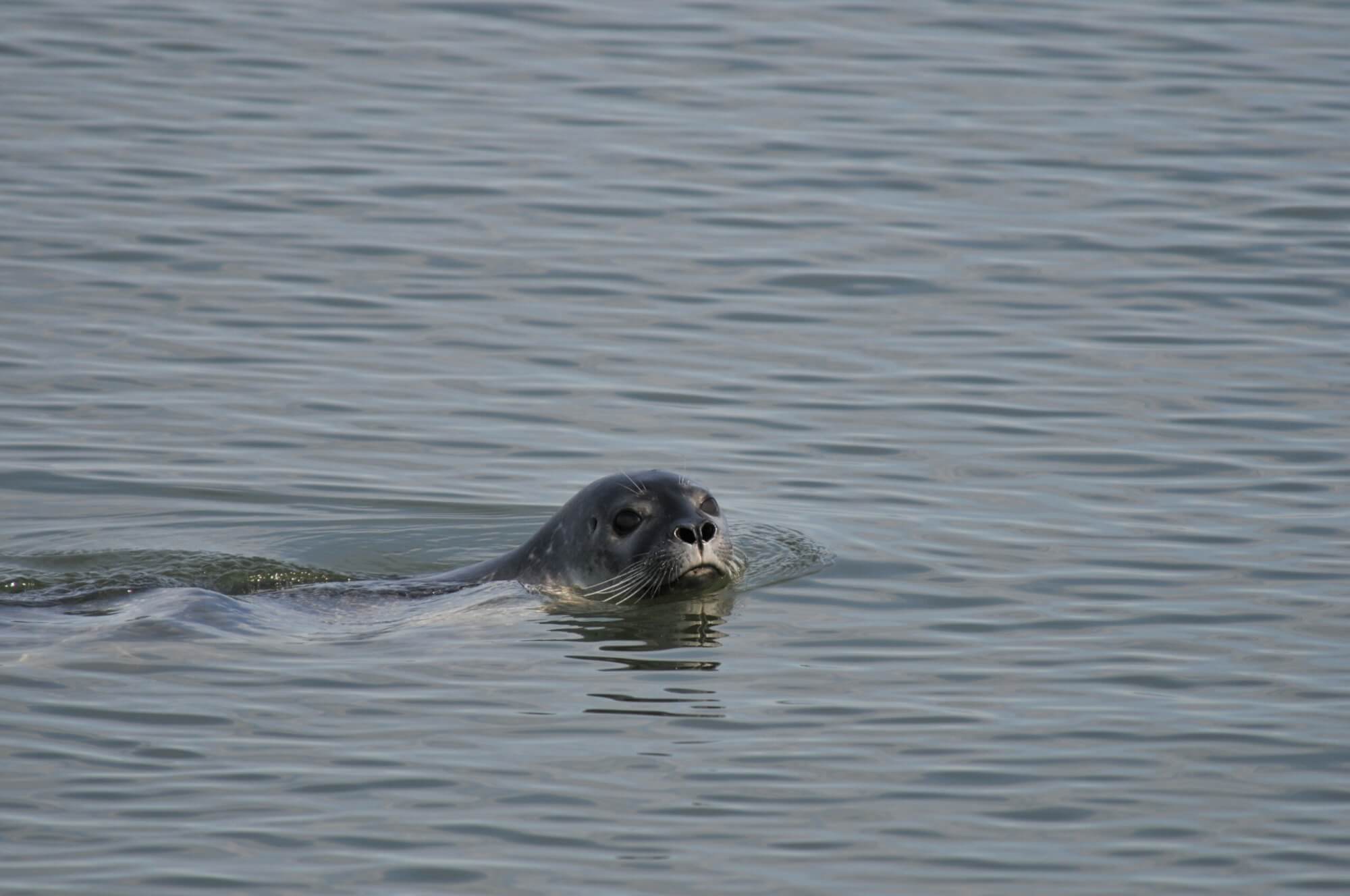Moult
Moulting takes place every year from July to mid-September. During this period, harbour seals spend considerable time at haulouts, as they need to conserve energy. Moulting implies high blood flow to the body surface, which is why the animals need to seek warmth out of the water. For observers, it is particularly important to maintain a safe distance from them so as not to disturb them during this period.
Diet
The harbour seal feeds mostly on fish, especially herring, sand lance, capelin, smelt and plaice. It may also consume crustaceans (e.g. shrimp) and molluscs (e.g. squid). The harbour seal is an opportunist that will vary its diet according to the availability of prey in its environment. Pups tend to eat smaller invertebrates and fish. The harbour seal is believed to feed mostly in the evening and at night. It can dive to depths of up to 480 m and stay under water for upwards of 30 minutes. Before diving, it lowers its heart rate and stocks up on oxygen in its blood and muscles, while its nostrils close tightly – almost like the blowhole of a whale! – to prevent it from drowning.
Causes of mortality
In the absence of a predominant threat, the harbour seal population of the St. Lawrence is fairly stable. Although seals – like any species of the St. Lawrence for that matter – can become entangled in fishing gear or collide with boats, such incidents have yet to be observed. They may on occasion be attacked by certain species of shark present in the St. Lawrence, though their main predator, the killer whale, is not a regular visitor to the region. Some individuals die of starvation after venturing to areas with insufficient food, while others may become infested with viruses, worms or bacteria. Any number of factors can result in mortality, though no single cause appears to be predominant.
Humans and harbour seals
The impact of human presence and activities on harbour seal conservation should not be underestimated. A year-round resident of the St. Lawrence, the species is also vulnerable to chemical pollutants and habitat degradation, not to mention fishing, which may reduce prey availability. Moreover, it is often the target of harassment by observers, which is a major source of stress. Lastly, there is also a risk associated with the feeding of seals by humans. Feeding seals is prohibited, otherwise they could lose the ability to hunt on their own.


